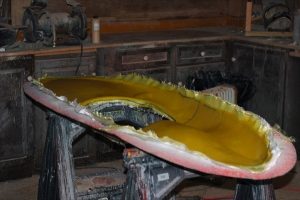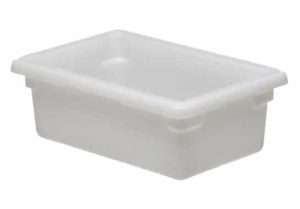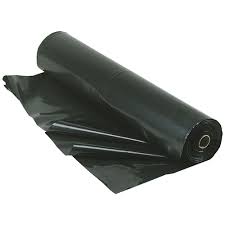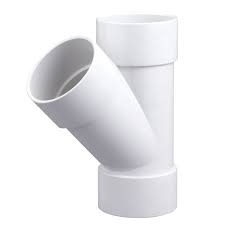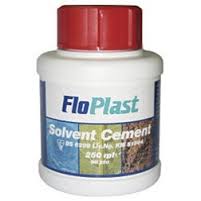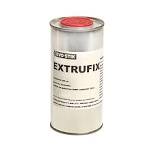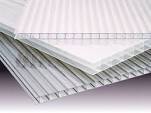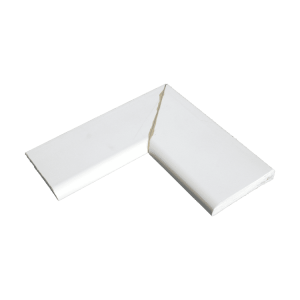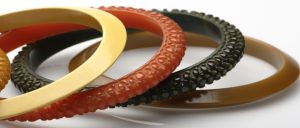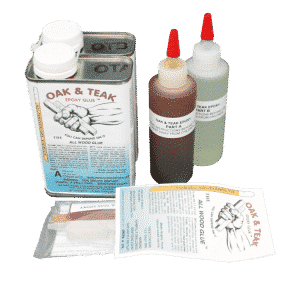Plastic Glue tips: How Do I Make Adhesives Stick to Plastics?
Plastics are generally chemically inert on the surface, due to their lack of reactive sites or even polar groups to which an epoxy might adhere by attraction of its (cured) polar groups to the oppositely-charged polar groups of the “plastic”. They can be notoriously hard to glue to which is why we have offered some plastic glue tips to help you to build and repair.
Smiths Oak and Teak Epoxy, which uses uses proprietary technology to develop better adhesion to a wider variety of stuff than most other glues can achieve bonds to many common plastics. This article has plastic glue tips for that, and some other common adhesives.
What are Plastics
The word plastic (adjective), by strict dictionary definition, meant something capable of undergoing continuous deformation, thus modeling clay is a plastic material. Nowadays, however, plastic (noun) means “anything-made-by-man”, almost. It came from the early synthetic materials that were technically described as thermoset (polymerised and cross-linked) and those that were thermoplastic, meaning had no definite melting-point, apparently solids at ambient but with heat were more easily continually deformable, e.g., polyethylene, polypropylene, polystyrene, etc.
Polyester
Polyester resin is commonly used to build boat hulls and canoes etc in a process that involves laying up glass cloth with the resin to form a rigid 3 dimensional structure. Epoxies are also commonly used for this purpose, and are more effective but significantly more expensive.
Epoxy resins, such as Oak and Teak or Layup and Laminating Epoxies will adhere to cured polyester resin once the surface has been sanded.
Conversely Polyester resins will tend not to adhere to cured epoxy resins, whether sanded or not.
Polyester resins will adhere to sanded cured polyester resins.
Polyethylene
Commonly used as flexible waterproof sheet, used to make bags, damp proof courses, food containers and all manner of everyday objects.
This is a notoriously difficult plastic to glue to as it is chemically inert. The lack of reactive sites or even polar groups to which an epoxy might adhere by attraction of its (cured) polar groups to the oppositely-charged polar groups of the “plastic”.
The trick to bond to polyethylene is to leave the object in the sun for a week. The ultraviolet from the sun breaks enough atomic bonds on the surface so that the polyethylene will stick to curing epoxy, and not release from it when the epoxy cures. This can effect a decent permanent glued bond on this notoriously difficult plastic.
Conversely, if you wish to use polyethylene sheet to resist adhesion when gluing, as suggested in our Fill-It application notes, it is important to use only fresh polyethylene sheet or you may find you have a permanently bonded sheet of plastic where you don’t want it!
ABS
ABS may be glued to ABS and similar materials with a solvent weld adhesive. The glue used to achieve this is Plastic dissolved in a solvent. In use the solvent attacks the ABS, and when the solvent evaporates both pieces of plastic are joined together.
This technique is commonly used for waste water pipes for plumbing systems.
Acrylic (Perspex is a brand name of Acrylic)
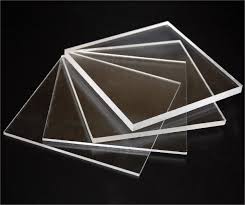
Acrylic is a semi rigid plastic available either clear or coloured in a variety of different forms, sheet, tubes, and other extrusions. It has been used as safety glass in greenhouses etc, although its UV tolerance is not great. it is a lovely material to work with, easy to machine and simple to glue together.
Acrylic, also known as Perspex can be glued with a variety of glues, all solvent based.
The ideal is a solvent such as extrufix, which can be used as it comes on a tight joint. The solvent is run into the joint with a pipette, and it dissolves the material around the joint to weld the two parts together. This method can work extremely well on cracks in vehicle lights and similar items, where the two sides to be repaired are in very tight proximity.
If the filling of gaps is required, to glue a looser joint perhaps, then the solvent can have some acrylic dissolved in it. You can make your own acrylic cement by dissolving a few offcuts of acrylic in the solvent in a small squeezy bottle (ideally one with a cap that can keep it airtight, as the solvent will evaporate).
The commonly available ABS cement (used for solvent welding plumbing fittings) will also bond acrylic although you may be left with a few more small bubbles in the joint once it has set.
Our Oak and Teak epoxy may be effective on polycarbonate surfaces provided they are sanded first, which may be useful to glue Acrylic to a substance that it cannot be solvent welded to.
Polycarbonate (Lexan)
Polycarbonate or Lexan sheet is also used to make safety glass substitutes, including the double and triple walled sections regularly used for conservatory roofs. It has better UV resistance than Acrylic sheet, typically lasting 5 years in bright sunlight to the 2 years that Acrylic will last before degradation. It has far better impact resistance as well.
Polycarbonate may be solvent welded with Ethylene Dichloride solvent cement (EDC),
Our Oak and Teak epoxy may be effective on polycarbonate surfaces provided they are sanded first, which may be useful to glue Polycarbonate to a substance that it cannot be solvent welded to.
PVC
PVC like ABS may be solvent welded to appropriate materials.
Super Glue is regularly used by window and conservatory fitters to glue uPVC sections together. Results are not perfect but best results are obtained using thickened Cyanoacrylate (Super Glue) and an accelerator.
Our Oak and Teak Epoxy resin will also glue sanded PVC sections, or the foamed sections shown below.
Phenolic (Bakelite)
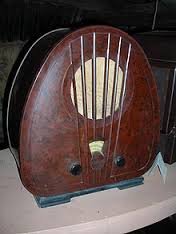
Moulded Phenolic resins are one of the very earliest plastics and are often known by the trademark Bakelite. They are a very rigid and brittle plastic, and were used for many applications including light switches and other electrical fittings.
Our Oak and Teak epoxy will adhere to Phenolic or Bakelite surfaces provided that they are sanded first.
Other Plastics
It is worth trying the UV exposure technique on all of the chemically inert plastics such as polypropylene and polystyrene.
This section is being expanded and will be added to regularly; check back occasionally for new plastic glue tips.
-
£10.00 – £450.00 Select options This product has multiple variants. The options may be chosen on the product page

